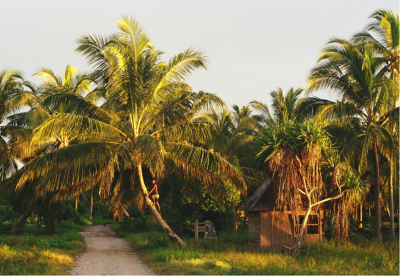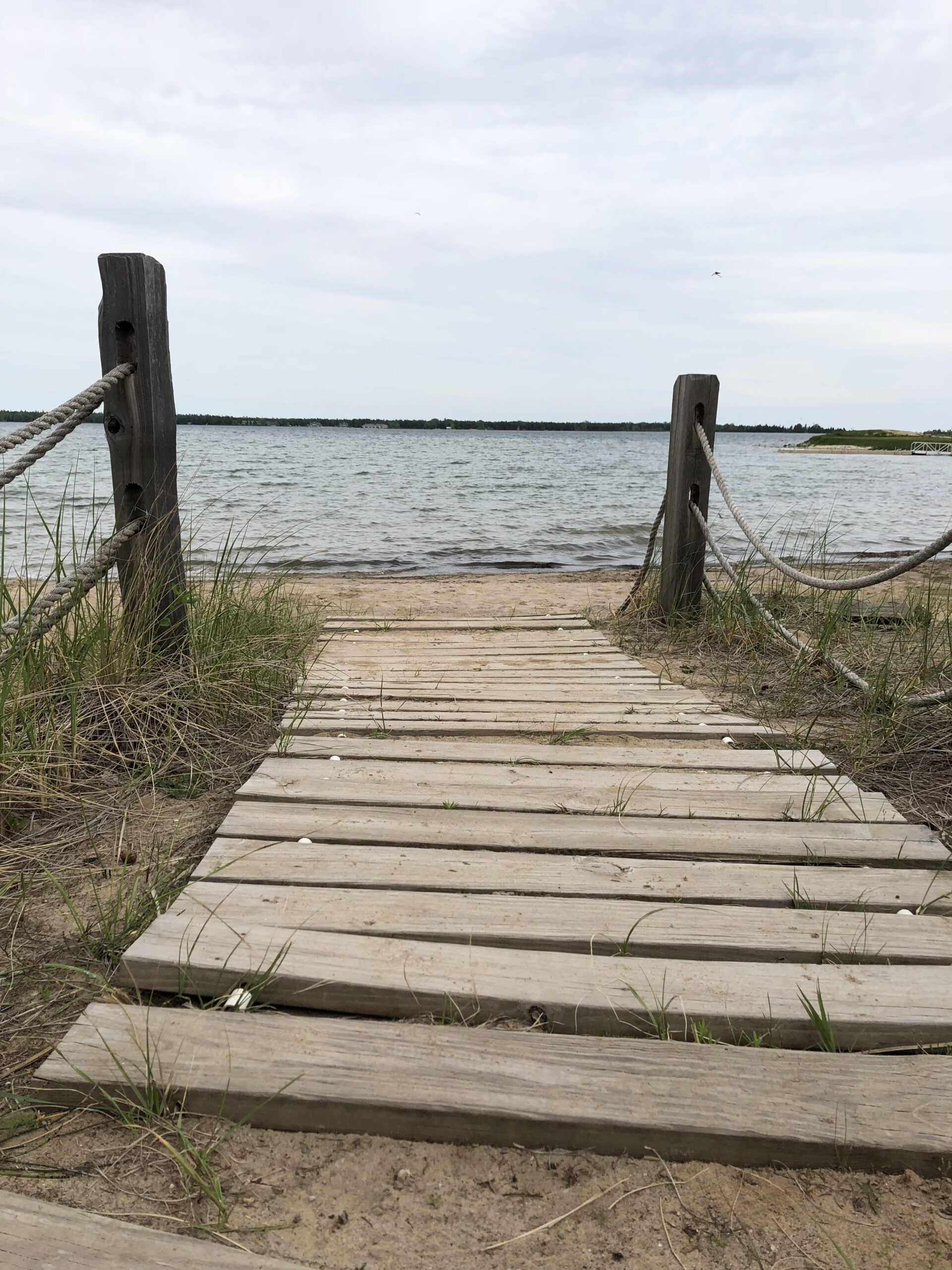I’m forty feet above the ground hanging, onto a palm frond for my life, and Batiota wants me to go higher. He motions for me to take my foot from the palm’s trunk and place it on the fronds above. I hesitate and give him a look that must be something between, What am I doing up here? and Why are you trying to kill me? Palm fronds grow green from the top, but whither and fall from below, so all I can see to step on is a dying frond, connected by nothing more than a thin, brown-red scar.

Batiota is supremely patient with me. He looks down under jet-black hair with a face far too calm for his 15 years. His body swings with the wind as one foot scratches the top of the other, resting softly on a brown frond.
Batiota climbs a dozen of these palm trees each day to collect sap for his family. It is an essential part of life on Christmas Island, a place where well water runs shallow and drinkable liquids are difficult to find. But his work is not without hazard. Deep scars run down Batiota’s right arm and leg, and when he’s on the ground, offset hips and a heavy limp cause him to favor one side. When he was 13, he fell from one of these trees—a dangerous thing on an island with no hospital.
I climb into the fronds carefully, stretching high to put my foot on the greenest frond I can reach, but I find myself sideways. One leg is too high while the other is too low. My hands grip a high green frond so tight that my knuckles are white. And I am on the wrong side of the tree.
“Come,” Batiota says. I move carefully around the fronds, trying to swing as gracefully as Batiota does, but I can hear young kids giggling below. A crowd is gathering.
The only way to get to Christmas is on a weekly flight from Hawaii, 1,200 miles northeast of here. Christmas Island is considered one of the best saltwater fly-fishing spots in the world and is on top of many fishermen’s lists, but because of the atoll’s remoteness less than a thousand people visit each year. A white man in a tree is a bit of a spectacle.
I get myself upright and lean against the green fronds. The lagoon begins only a few dozen feet away, and from this height I can see its fifteen miles of calm, clear water and sandbar flats—a painter’s palette of blues, greens, reds, and yellows made from crushed coral in a massive lagoon.
Next to me, Batiota stands over one of the two thick flower stems, the source of the palm’s sap. Each stem juts two feet from the palm’s head and is bound with twine where the flowers should grow. Batiota makes quick work of the stem, exaggerating his movements so I can learn. When he finishes, he motions for us to go to the next. It is my turn.
We swing around the tree so that I am squatting over the second flower stem. Tiny buds press out from the sappy end and a thin frond has been tied to guide the sap into a plastic soda bottle. I untie the twine that holds it all together and hand Batiota the full bottle, which is filled with frothy yellow goo and a couple of flies. I take his machete, shave off the flower buds, and tie on an empty bottle, positioning a new frond to lead the sap into it. In ten hours, this bottle will be filled too.
“Good job,” Batiota says, offering the smile you give a small child. I am close to twice his age.
A talented cutter can collect up to a gallon of sap per tree each day. It is a significant amount in a place that gets less than thirty inches of rain a year, but the Kiribati have learned to stretch their local resources far. Every part of the palm is used: husk for twine, shells for bowls, trunk for timber, fronds for thatching, milk for drink, coconut meat for food, and sap for sweetener, syrup, sustenance, or fermented into kiokioke, a kind of beer.
With two liters collected and new bottles set up, we step around the tree to climb down. Batiota points at a clump of coconuts and asks if I’d like one.
“Sure,” I say. He kicks two from their perch and the tree shudders and howls. I fight the urge to hug the fronds as the coconuts fall 45 feet and bounce to a stop.
We climb down the machete-cut steps to the bottom and some of the kids I’ve met in the last few days walk over smiling. One asks, “So how was it?”
“Good,” I say, “but I was a little scared at first.”
“Yeah,” laughs Kuariata, a shy fourteen-year-old in the group. She points at my legs and then shakes hers violently. The other kids laugh as she gives me a playful punch on the arm.
Batiota opens the two coconuts with his machete, and we sit in the hot equatorial sun, sipping the cool milk. The kids gather around, laughing and speaking in I-Kiribati. Some shake their legs in imitation and then pat me on the back to show that they are proud of me. The rest laugh nervously. They are all at the age that if their family needs it, they will learn how to tap these flowers.
Batiota goes to another tree, leaving me behind. It is shorter and slanted over the lagoon.
“Why didn’t he take me up that one?” I laugh to the kids. “This one was too tall.” They all laugh.
Kuariata climbs up behind Batiota, showing off. At the top, she hangs far away from the palm—one foot on the trunk, two hands on the end of a green frond, her body over an abyss. She swings back and forth, pivoting on her bare foot, nothing but air below, smiling ear to ear.
I remember that smile from when I was her age—high on a swing, swinging as far as it would take me, worried and thrilled that I could go over. Sitting among these kids, I cannot help but find that smile again.
Brice Particelli’s work has been published in Gray’s Sporting Journal, Crab Orchard Review, and Fourth River.
Photo by the author




